
Book cover image courtesy www.kansascity.com
The three-foot-long rectangular box holding the fugitive slave rattled along the railway toward New Bedford, Henry Brown enduring a torment of his own devise. Who’d suspect a grown man hidden in such small crate? He made it, more than 250 miles in 24 hours. “Nothing saved him from suffocating but the free use of water…and the constant fanning of himself with his hat,” recounted his rescuer. Two dumps of the crate on his head nearly killed him.
Henry “Box” Brown exemplifies the resourcefulness and courage of fleeing slaves, a theme of Pulitzer-winning historian Eric Foner’s Gateway to Freedom: The Hidden History of the Underground Railroad. The book demonstrates that the “railroad” — a loose system of slave fugitive liberation — had a grassroots interracial genesis, and spread primarily through Maryland, Pennsylvania, Virginia and Delaware, though it extended all the way to Canada.
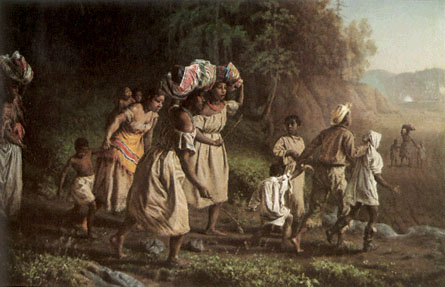
An artist’s depiction of fugitive slaves on the so-called underground railroad. Courtesy discoversalemcounty.com
At the author’s best, the sheer number of escapes, heroes and villains carry the reader along, as if galloping through a valley of subterfuge and salvation that might also doom freedom at any time. One fugitive’s betrayal pivots on both a southbound carrier pigeon and a “stool pigeon.” The stories convey the sometimes breathtaking effect of the spontaneously growing collaboration between whites and blacks.
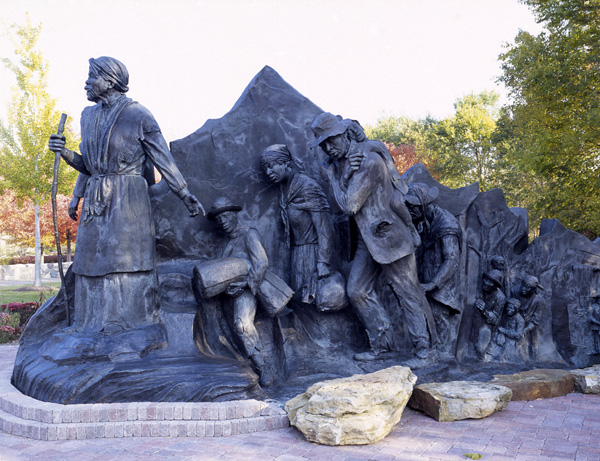
The Underground Railroad Monument, in Battle Creek, Michigan, memorializes the heroism of fugitive slaves who escaped to freedom via the covert communication and transportation system in the antebellum era. Courtesy afriendlyletter.com
Foner corrects the historical extolling of white abolitionists as the slave’s primary liberators. After a four-chapter chronological backdrop, he takes us to the dawn of the Fugitive Slave Act in 1850, which federally mandated the return of fugitive “property” — Foner delves into the black community’s complex response to the crisis generated, amid increasing freedom flights. Abolitionist “vigilance committees” arose along border states. African-American William Still proved a one-man liberation force, and free blacks did most of the dangerous hiding and assisting of fugitives, and public protesting of their “renditions” to re-enslavement. 1
Abolitionist factions squabbled. Pacifist William Lloyd Garrison disparaged the role of the black church in the effort. However, Foner illustrates the crucial sanctuary and deliverance the black church and community provided. Many newspaper ads described fugitives in possessive detail: one slave “wears a truss for hernia…” The great black orator and journalist Frederick Douglass emerges as a precursor of both Martin Luther King Jr. and Malcolm X, for espousing violent resistance, if necessary. Yet evidently few bloody confrontations ensued — the Fugitive Slave Act proved difficult to enforce, as was the Constitutional language that dictates the return of runaway human “property.”
Foner’s mother lode source was New Yorker Sydney Gay’s meticulously documented “Record of Fugitives,” more than 200 runaways he aided, including Harriet Tubman, the era’s most fearless angel of mercy. Gateway’s cumulative power sometimes clots with repetition of similar anecdotes, but one learns vividly the dogged persistence of America’s ugliest reality and the complicated passion shared by abolitionists and slaves for freedom, if not equality.
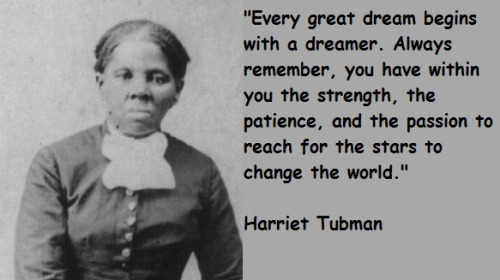
Harriett Tubman courtesy
To further understand how America came to war with itself, one might try Harriet Beecher Stowe’s 1852 literary sensation Uncle Tom’s Cabin, a virtuoso feat of imaginative agitprop that helped transform American sentiment on slavery.
Or read the finest slave narratives, of Douglass or Henry Bibb — authentic, moving and eloquent testimonies regarding the cold-blooded lash, the brutal convoluting of “Christian” values.
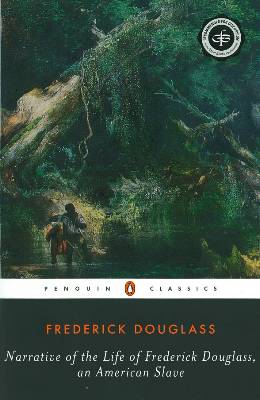
Courtesy oaklandmcc-store.com
Foner crucially delineates the profound challenge and existential risk that engulfed an inter-racial generation as the nation thundered toward dissolution, or Civil War.
Today myriad African-Americans struggle mightily, as much of the world embraces the black cultural and social genius that emerged from slavery. Meanwhile, the Dixie-publican Tea Party — inflamed by a black president from Illinois, as was the slave-holding South by a heroic white one — burns with ancient contempt, as our political discourse and democracy suffer.
Our heightening community-vs.-institution racial tragedies might also gain illumination from perhaps America’s true “Greatest Generation.”
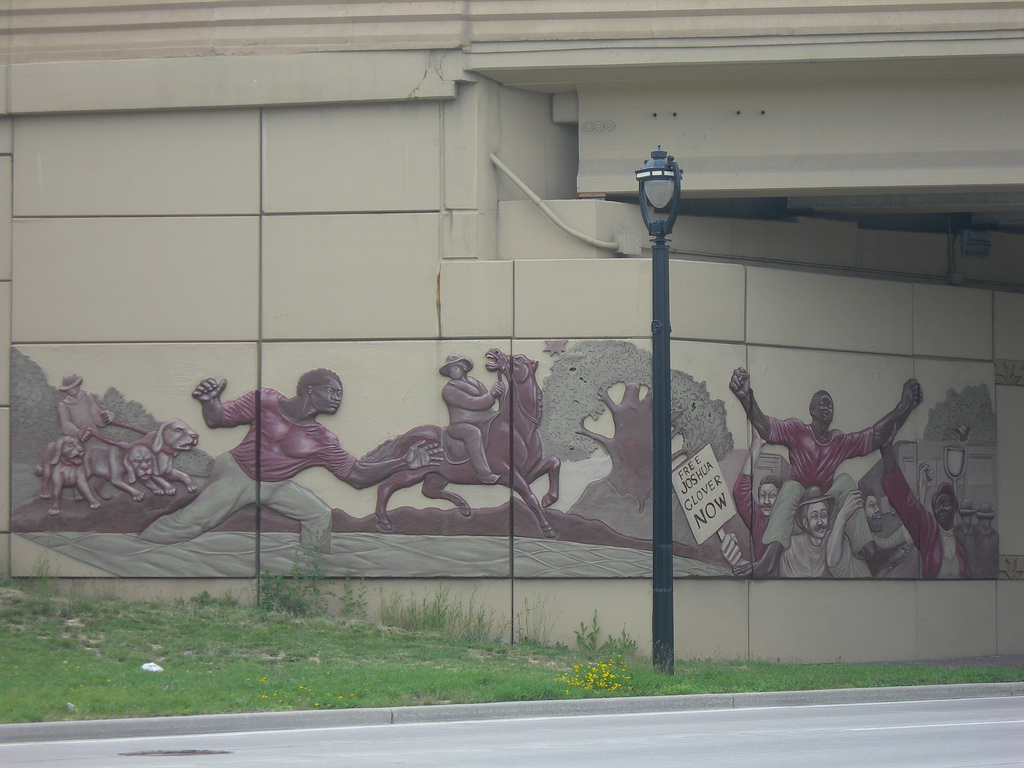
Foner touches on the role that so-called “radical Wisconsin” played in the abolitionist movement, becoming the only state to declare slavery unconstitutional. Despite highlighting all the slave roles in self-liberation, Foner curiously neglects naming Joshua Glover, the slave who was rescued by a Milwaukee mob led by Sherman Booth. There are several memorials to this liberation effort including this mural on the Interstate 43 overpass in Milwaukee (above) and a sign at the place on Booth Street and Glover Street in Riverwest where Booth provided a safe house for Glover.
_______
1. Joshua Glover was a runaway slave from St. Louis, Missouri who sought asylum in Racine, Wisconsin in 1852. Upon learning his whereabouts in 1854, slave owner Bennami Garland attempted to use the Fugitive Slave Act to recover him. Glover was captured and taken to a Milwaukee jail. A mob led by Sherman Booth broke into the jail and rescued Glover, who then escaped to Canada via the Underground Railroad. The rescue of Glover and the federal government’s subsequent attempt to prosecute Booth helped to galvanize the abolitionist movement in the state that eventually led to Wisconsin becoming the only state to declare the Act unconstitutional.” https://www.flickr.com/photos/auvet/5919752521/
2 One fascinating aspect of the underground railroad strategies that Foner does not touch on was the creation and use of quilts by sympathetic African-American women, as documented in a remarkable art exhibit in Milwaukee several years ago. The women employed a series of symbols sewn into the quilts that acted as covert signals to slaves when the collaborators would hang the quilts out for fugitives to see. Read about this in my Culture Currents feature review of the show “If these quilts could talk: signals along the Underground Railroad.” https://kevernacular.com/?p=1063
This book review was first published in Milwaukee Journal Sentinel taps section, Sunday March 15, 2015http://m.jsonline.com/entertainment/books/eric-foner-highlights-black-communitys-role-in-underground-railroad-b99458445z1-296218481.html


Enjoyed the review and learned some interesting facts about Wisconsin’s involvement in the Underground RR, even though those items were not mentioned in Foner’s book. Perhaps Mr. Foner should consider a sequel with an emphasis on the Underground RR in the Midwest.
Yes, Frank, I doubt the last word has been written on the
UR, but Foner opened plenty of doors. Have you ever visited the Civil War Museum in Kenosha? Recommended.
Your review has me interested in reading this book. I’m also looking forward to visiting the Civil War Museum in Kenosha, which you reviewed so positively in your 2013 article.
Cary,
Thanks for taking the time to read and care about our nation’s fraught history, which still weighs heavily today. Look forward to seeing you and Tom in Kenosha.
Kevin